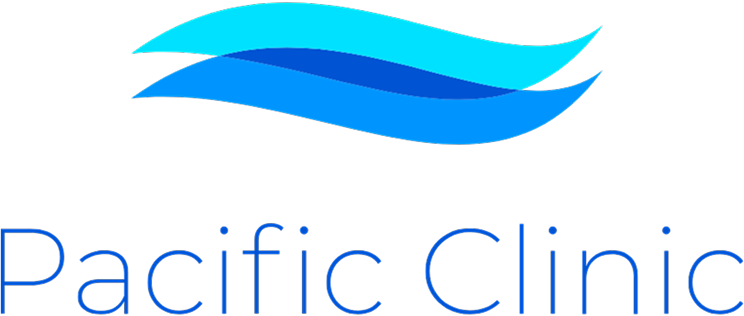Joint Pain Treatment in Bellevue, WA
Relief Without Surgery

The Benefits of Non-Surgical Joint Pain Treatment
Joint pain can significantly limit your daily activities and quality of life. At Pacific Clinic in Bellevue, our non-surgical approach to joint pain offers numerous advantages over traditional treatments:
- Reduced joint pain and inflammation
- Improved joint function and mobility
- Stimulation of your body's natural healing processes
- No downtime
- Avoidance of surgery and prolonged recovery
- No synthetic drugs or their side effects
- Potential to delay or avoid joint replacement
Understanding Joint Pain
Joint pain affects millions of Americans, limiting mobility and impacting quality of life. Understanding the underlying causes of your joint pain is essential for effective treatment.
Common Causes of Joint Pain
Osteoarthritis: The most common form of arthritis, characterized by the breakdown of cartilage that cushions the ends of bones
Rheumatoid Arthritis: An autoimmune condition where the body’s immune system attacks the joints
Post-Traumatic Arthritis: Develops after an injury to the joint
Bursitis: Inflammation of the fluid-filled sacs (bursae) that cushion joints
Tendonitis: Inflammation of the tendons that connect muscle to bone
Joint Injuries: Sprains, strains, and other injuries to the joints
Most Commonly Affected Joints
Joint pain can occur in any joint in the body, but the most commonly affected areas include:
- Knees
- Hips
- Shoulders
- Ankles
- Wrists
- Elbows
- Fingers and toes
At Pacific Clinic, we specialize in non-surgical regenerative treatments for joint pain, using your body’s own healing mechanisms to reduce pain, improve function, and enhance your quality of life.
Our Joint Pain Treatments

PRP Therapy for Joint Pain
Platelet-Rich Plasma (PRP) therapy is an innovative approach to treating joint pain that uses your body’s own healing factors to stimulate tissue repair and regeneration. This treatment begins with drawing a small amount of your blood, which is then processed in a centrifuge to concentrate the platelets. These platelets contain hundreds of growth factors and bioactive proteins that play a vital role in the healing process. Our physicians recognize not all PRP is the same, hence our clinic uses the current top of the line PRP kit to process your blood & achieve the highest quality & concentration of PRP.
The concentrated PRP is precisely injected into the affected joint under careful guidance by our experienced physicians. Once injected, the growth factors in PRP work to:
- Reduce inflammation in the joint
- Stimulate repair of damaged cartilage
- Increase production of natural lubricating fluid in the joint
- Slow or halt the progression of arthritic damage
- Improve overall joint function and mobility
PRP therapy is particularly effective for osteoarthritis, the most common form of joint pain, but can also benefit other types of joint conditions. Many patients experience significant pain relief and improved function after PRP treatment, often allowing them to resume activities they previously had to avoid.

Comprehensive Joint Care Approach
At Pacific Clinic, we understand that joint pain often requires a multifaceted approach for optimal results. Our physicians take a comprehensive view of your joint health, considering all factors that may be contributing to your discomfort. Depending on your specific condition, your treatment plan may include:
- Customized PRP protocols based on your specific joint condition
- Guidance on joint-friendly exercise and activity modification
- Integration with physical therapy when appropriate
- Adjunctive therapy with Healite II, a medical-grade LED system that reduces inflammation and accelerates recovery by stimulating circulation and promoting cellular repair—either as a standalone treatment or in combination with PRP
This comprehensive approach ensures that we address not just the symptoms but the underlying causes of your joint pain for more lasting relief.

The Joint Pain Treatment Process
1. Comprehensive Evaluation
2. Treatment Planning
3. The PRP Procedure
4. Recovery and Results
After your PRP treatment, you may experience mild soreness at the injection site for 24–48 hours, similar to how you might feel after a workout. We recommend limiting strenuous activities involving the treated joint for a few days, but most patients can return to normal daily activities immediately.
To support recovery and enhance healing, Healite II low-level light therapy can be used post-treatment. This hands-free LED treatment boosts circulation and reduces inflammation, helping speed up tissue repair and reduce post-procedure discomfort.
Most patients begin to notice improvement in pain and function within 2–6 weeks as the healing process progresses, with continued improvement for up to 6 months. Depending on the severity of your joint condition, a series of 2–3 treatments spaced 4–6 weeks apart may be recommended for optimal results.
PRP Treatment for Specific Joints
At Pacific Clinic, we offer specialized PRP treatments for various joints throughout the body, with protocols customized to the unique characteristics of each joint:
Knee Pain
PRP therapy is particularly effective for knee osteoarthritis, one of the most common forms of joint pain. The treatment can help reduce pain, improve mobility, and potentially delay or avoid knee replacement surgery. Many patients with knee pain report significant improvement in their ability to walk, climb stairs, and participate in daily activities following PRP treatment.
Hip Pain
Shoulder Pain
The shoulder’s complex structure makes it vulnerable to various painful conditions. PRP therapy can address rotator cuff injuries, arthritis, and other sources of shoulder pain by promoting healing within the joint. Patients typically report improved range of motion, decreased pain with overhead activities, and better overall shoulder function.
Other Joints
How PRP Compares to Other Joint Pain Treatments
PRP Therapy
How it works: Uses your body’s own healing factors to stimulate tissue repair
Treatment frequency: Typically 1-3 treatments with long-lasting results
Downtime: Minimal, usually just 24-48 hours of activity modification
Side effects: Minimal; temporary soreness at injection site
Best for: Those seeking a natural approach with minimal downtime
Long-term benefits: Addresses underlying issues, not just symptoms
Corticosteroid Injections
How it works: Reduces inflammation through powerful anti-inflammatory medication
Treatment frequency: Effects typically last 2-3 months, with diminishing returns
Downtime: Minimal
Side effects: May weaken tissues over time, limited number of injections per year
Best for: Short-term relief of severe inflammation
Long-term benefits: Limited, may accelerate cartilage loss with repeated use
Hyaluronic Acid Injections
How it works: Supplements joint lubricating fluid
Treatment frequency: Series of injections, effects last 6-12 months
Downtime: Minimal
Side effects: Generally mild, occasional allergic reactions
Best for: Moderate osteoarthritis, especially of the knee
Long-term benefits: Symptom management without addressing underlying degeneration
What Our Patients Say
Sarah M., Bellevue
James T., Seattle
Frequently Asked Questions
Is PRP therapy for joint pain painful?
How many PRP treatments will I need for joint pain?
How soon will I notice results from PRP therapy?
Is PRP therapy covered by insurance?
Who is a good candidate for PRP joint treatment?
Take the First Step Toward Joint Pain Relief
Contact Us
Phone
Address
1600 116th Ave NE #104
Bellevue, WA 98004
